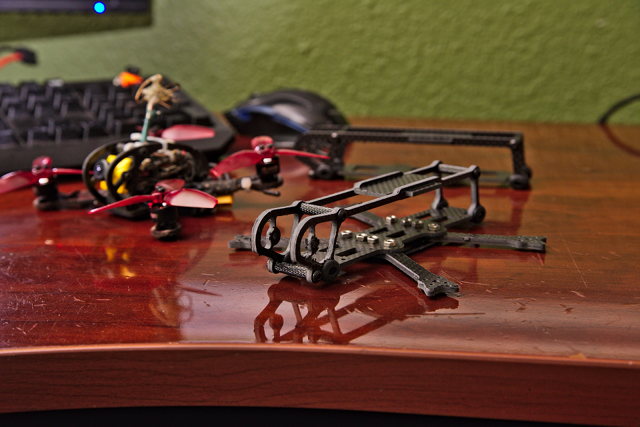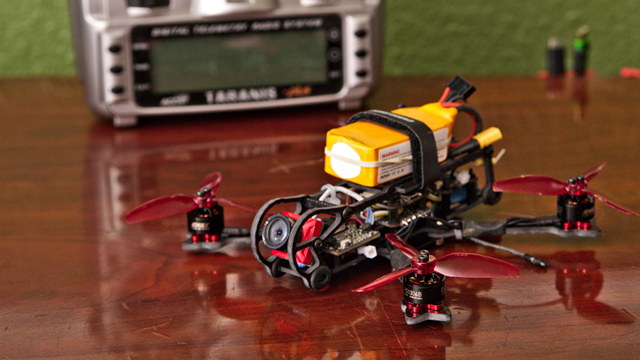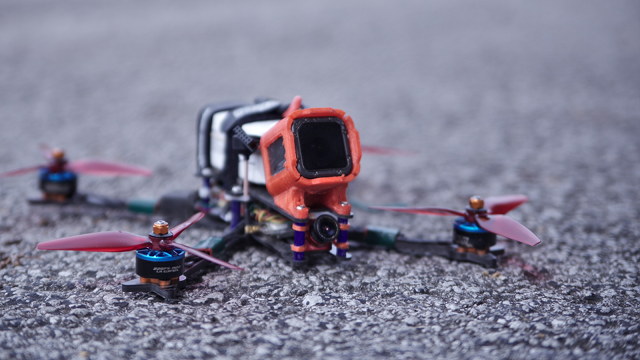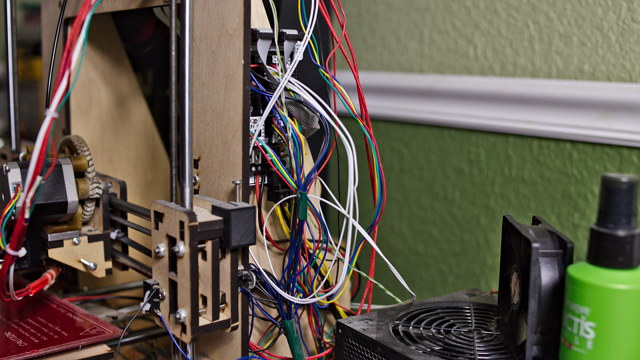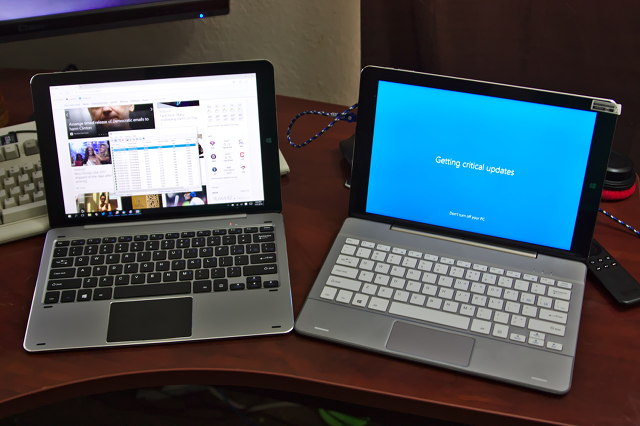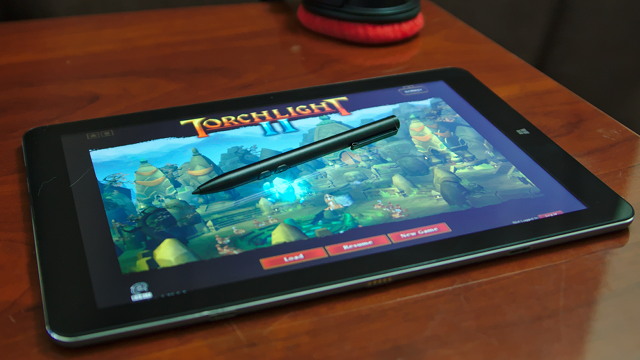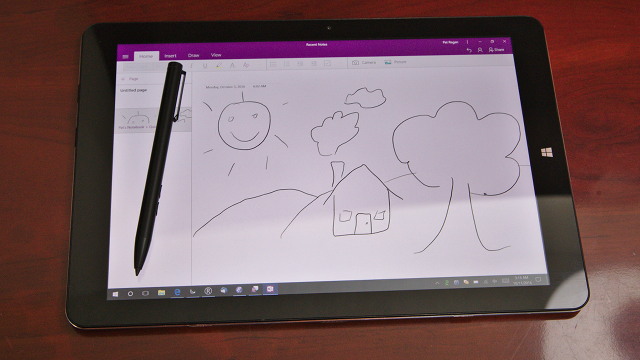I only learned about Xiamoi’s competitor to the Osmo Pocket a few days ago. It was announced quite a while back, and it seems it has been available for months. I feel like I’m living under a rock or something!
I was informed of the existence of the Fimi Palm in an email from Banggood telling me it was on sale for $155, but apparently not currently available to be shipped to the United States.
I saw that, and I thought, “Holy crap! That looks just like my Osmo Pocket at half the price!” That isn’t quite true. I can order [a Fimi Palm from Amazon][fpa] right now for $195. That’s $125 less than the Osmo Pocket.
I haven’t ordered a Fimi Palm, but I’m going to tell you why I gave it some serious consideration!
- Three Months With The Osmo Pocket: The Perfect Vlogging Camera?
- DJI Osmo Pocket at Amazon
- Xaiomi Fimi Palm at Amazon
- Xaiomi Fimi Palm at Banggood
The Xiaomi Fimi Palm is amazing on paper
Xiaomi has attempted to address almost every single complaint I’ve had about the Osmo Pocket. The Pocket is $320. If you want WiFi and Bluetooth, you need a $54 add-on module. If you want physical controls for the gimbal, that’s another $53 add-on.
This makes the Fimi Palm even more attractive, right? If you’re using these accessories, the Fimi Palm really is less than half the price of an Osmo Pocket.
I recorded in 4K, so zooming in a bit in post isn't too bad. I can see the solder flowing.
— Pat Regan (@patsheadcom) July 22, 2020
Is the silkscreen slightly blurry and soft? Or is the silkscreen on the $1.50 Arduino terrible? I think it is a little of both. pic.twitter.com/pm2WfJ9mey
I’ve started experimenting with using the Osmo Pocket to record close-up soldering footage at my workbench. I had to buy a USB-C extension cable to connect the Osmo Pocket to my phone in order to get a preview and control the video. You can’t use the normal USB-C port on the bottom of the Osmo Pocket to interface with your phone, so I needed to buy a $15 cable to do this.
It would have been nice to have built-in WiFi support to accomplish this for free and to eliminate the cable!
The wide field of view of the Fimi Palm would be fantastic!
The Xaiomi says that the Fimi Palm has a 128-degree field of view. That’s huge compared to the Osmo Pocket’s 80 degrees.
When I use my Osmo Pocket for vlogging, I pop on my Freewell wide-angle lens. That’s another $35 upgrade, and it is an upgrade I might easily lose too! This puts my Osmo Pocket in the 120-degree range, and it means I don’t have to hold the camera as far from my face while riding my Gotway Tesla electric unicycle.
The bummer is that the Freewell wide-angle lens is the only wide-angle lens worth using. All the others I’ve seen are quite blurry around the edges. Not only that, but it is sometimes tough to find the Freewell lens in stock. It’d be nice to not have to worry about losing this little guy.
The wide-angle lens lets me hold the camera closer to my face. With the lens attached, I can bend my elbow and still frame the shot the same as the bare Osmo Pocket held as far away as I can extend my arm. Holding the camera closer is safer for my balance while riding my unicycle, less tiring for my arm, and it gets the mic closer to my noise hole.
Next time I swap from talking to the camera to chasing a skateboard, I need to make sure I have a place to safely stow the Osmo Pocket's wide angle lens! pic.twitter.com/LkI7YcCTPQ
— Pat Regan (@patsheadcom) July 12, 2020
I’ve watched a handful of review videos. For my use case, the field of view upgrade would be negated by the Xiaomi Fimi Palm’s disappointing face tracking.
The Osmo Pocket usually puts the top of my head near the top of the frame. The Fimi seems to put your face right in the center of the screen. That’s horrible! Sure, I could crop some of that down in post, but by the time I do, I would have an image with the same view as the Osmo Pocket.
This was a disappointment I had with my Zhiyun Smooth 4 gimbal too. Why on Earth would I want my face in the center of the frame?
This is something that could be fixed in a firmware update.
- Freewell wide-angle lens at Amazon
The external mic support would be nice, but the built-in mic is a downgrade
The spec sheet says you can plug a 3.5mm microphone into the Fimi Palm. This sounds great, because the microphone adapter for the Osmo Pocket is another $27 add-on. Unfortunately, it sounds like the Fimi Palm also needs an adapter, and it doesn’t look like generic USB-C adapters work.
I have been absolutely amazed at the quality of the internal microphone on the Osmo Pocket. When I record in my office, I tend to be happier with the audio from my Osmo Pocket than I am with the audio from my Zoom H1n. The acoustics in here aren’t great, and I have a lot of computer fans running. The Osmo Pocket filters a lot of that out for me!
I found a snippet where I was whining about the wind. I absolutely figured you wouldn't be able to hear my talk, and that it would sound terrible. It seems alright to me!
— Pat Regan (@patsheadcom) July 9, 2020
I can hear bugs, nature, and sometimes the whirrrr of my wheel. pic.twitter.com/36t0Iaq7IH
Not only that, but the Osmo Pocket has done an amazing job filtering out wind noise when I ride my electric unicycle at 15 mph.
I do assist the Osmo Pocket, though. I stick the base of the camera into a generic foam microphone windscreen. For all I know, this would work well on the Fimi Palm too. I haven’t gotten to try it with the Fimi Palm, but I do know for sure it works well with the Osmo Pocket!
I listened to some mic sample comparisons. If I could stick the Fimi in my wind guard and not get wind noise at 15 mph on the EUC, I would be happy enough with the mic.
- Three Months With The Osmo Pocket: The Perfect Vlogging Camera?
- DJI Osmo Pocket at Amazon
- [Xaiomi Fimi Palm][xpa] at Amazon
- Xaiomi Fimi Palm at Banggood
The resolution and frame rate doesn’t matter
They’ll both do 4K. I think the Pocket can do 60 Hz at 4K, while the Palm can only manage 30 Hz. At other resolutions, both cameras seem mostly comparable.
Resolution doesn’t matter to me all that much. I care about image quality. DJI most definitely has better color science than Xiaomi. When I watch reviews comparing both cameras, I can always pick out the Osmo Pocket immediately, and I know which one I prefer.
I almost always record with the D-Cinelike color profile on my Osmo Pocket. This gives me a bit more room to correct things in post. I don’t usually take advantage of this, though. Most of the time I just drop my D-Cinelike color-grading template onto the footage. I like knowing a bit of extra dynamic range is there if I need it.
The Fimi Palm has a similar setting.
You can control the ISO, frame rate, and exposure compensation on the Fimi Palm. You can’t control shutter speed. The Osmo Pocket had limitations like this when it was first released, and I wouldn’t be surprised if this situation is corrected in a Fimi firmware update.
- Three Months With The Osmo Pocket: The Perfect Vlogging Camera?
- DJI Osmo Pocket at Amazon
- [Xaiomi Fimi Palm][xpa] at Amazon
- Xaiomi Fimi Palm at Banggood
How much better is the video from the Osmo Pocket?
That’s the question. Is it $125 better? Is it $225 better? That’s roughly the difference in price between the Fimi Palm, the base Osmo Pocket, and an Osmo Pocket with WiFi and a scroll wheel.
The fact is that if you’re using an Osmo Pocket, you’ve already made a huge compromise. I’d love to carry a Sony a6500 on a gimbal when I ride my electric unicycle. I’d hate having to carry it, and I’d never be able to store it.
I carry the Osmo Pocket because it literally fits in my pocket. I’m already compromising on audio and video quality. A better question to ask is how much more I’d be willing to compromise.
- Three Months With The Osmo Pocket: The Perfect Vlogging Camera?
- DJI Osmo Pocket at Amazon
- [Xaiomi Fimi Palm][xpa] at Amazon
- Xaiomi Fimi Palm at Banggood
The Xiaomi Fimi Palm has a tripod mount!
This is awesome, even if it isn’t in an ideal spot. I’ve 3D-printed things to help attach my Osmo Pocket to a tripod, but I rarely feel completely confident that my Osmo Pocket isn’t going to slip out and tip over.
Having tripod threads built into the body of the Fimi Pocket would make me feel better.
If I dropped my Osmo Pocket in the river, I would immediately order a Fimi Palm!
This is what I’ve realized here. My Osmo Pocket is doing a fine job. I have no need to replace it with a similar camera. The Fimi Palm isn’t really an upgrade. It has some improvements over the Osmo Pocket, and it is lacking in other areas. Even if it were a straight-up upgrade, it would be a minor upgrade at best.
I’m going to keep chugging along with my Osmo Pocket. When I inevitably drop the poor thing, I will probably replace it with [a Xiaomi Fimi Palm][xpa].
Maybe Xiaomi will have addressed my face-tracking issue with a firmware update by then, right?!
Conclusion
For me, the [Xiaomi Fimi Palm][xpa] is 75% of an Osmo Pocket at 50% of the price. That’s based on the situations where I use my own Osmo Pocket. If you don’t need to ride a unicycle at 15 mph, and your face-tracking needs are different than mine, the Fimi Palm might be more than 100% of an Osmo Pocket for half the price!
What do you think? Do you own a Fimi Palm or an Osmo Pocket? Do you have the same concerns as I have? Did it take you months to learn of the existence of this Osmo Pocket competitor? Let me know in the comments, or stop by the Butter, What?! Discord server to chat with me about it!
- Three Months With The Osmo Pocket: The Perfect Vlogging Camera?
- DJI Osmo Pocket at Amazon
- [Xaiomi Fimi Palm][xpa] at Amazon
- Xaiomi Fimi Palm at Banggood
